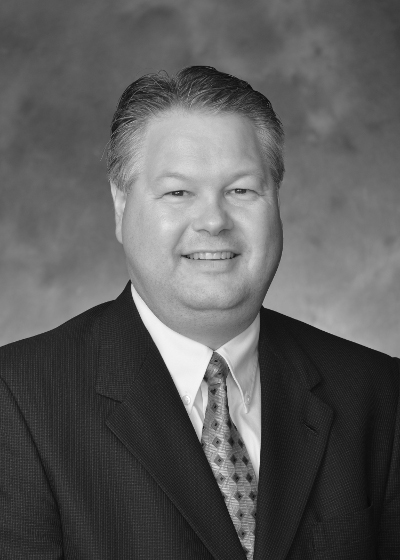 The Honorable Daniel R. Murphy, Linn County Circuit Court
The Honorable Daniel R. Murphy, Linn County Circuit Court
It cannot be emphasized enough that the better organized attorney in the courtroom will nearly always do better than the disorganized attorney. Judges and juries cannot help but notice how well counsel is organized. Attorneys who are naturally predisposed toward being organized have an advantage here but anyone can learn to organize themselves and exercise some self-discipline when preparing for trial.
Trial Notebook
Nothing impresses less than a manila file folder stuffed full of disorganized documents and an attorney wasting everyone’s time sifting through such a file and mumbling about how “it was just here”. I have seen this many times and the effect is the same each time.
File folders are not for trial! They are for storage of documents. To be organized at trial the practitioner needs to create a trial notebook with sections devoted to the various phases of the trial. This way notes, exhibits and other documents are at your fingertips when needed. The trial notebook can be paper-based or on a computer. I suggest the paper based version continues to be best because you need paper documents to offer into evidence.
How you organize your trial notebook is a personal preference but at the very least each one should include tabbed and labeled sections on:
- Jury Instructions in writing
- Voir Dire in Jury Trials
- Legal Memoranda – read and follow UTCR 6.050 regarding trial memos.
- Opening Statement
- Notes for examining your witnesses including, as needed, past recollection recorded; photographs, etc.
- Notes for cross examining their witnesses including impeachment documents.
- Exhibits including the original to offer to the court clerk, a copy for the witness, a copy for you, a copy for counsel and a copy for the judge. Exhibits should all be properly marked.
- Notes on any anticipated motions during trial or difficult evidentiary issues.
- Closing Argument
- Any motions or memoranda you intend to file at end of case.
Exhibits
A trial attorney who handles exhibits with confidence and expertise will dominate a courtroom and inspire confidence. An attorney who fumbles with exhibits, has to mark them as they offer them, cannot keep track of what number they are on, and otherwise appears disorganized will not impress anyone.
All possible exhibits should be pre-marked with evidence labels and numbered pursuant to UTCR 6.080. If the number of exhibits is large or there are multiple parties counsel needs to confer with the other parties to coordinate the numbering. This should not be left to the morning of trial.
If counsel is rusty on laying foundations it would be wise to put a cheat sheet in the trial notebook for how to lay the foundation for exhibits, especially certain records and photographs.
Witnesses
It is very important that counsel prepare for witnesses and prepare witnesses in advance of trial.
Counsel should talk to all witnesses prior to trial and make sure counsel understands what the witness knows from personal knowledge (unless there is a clear exception to the hearsay rule that applies). Counsel should never rely on what their client tells them a witness knows or can testify to.
To avoid cumulative and redundant testimony counsel needs to know in advance and prepare for what the witness can testify to.
Witnesses should also be told about courtroom procedure. They need to know what to expect, where to go, how the swearing in process works, etc. They should be told when to report to the courthouse, where to go in the courthouse and the importance of remaining available until excused.
Counsel must have a reasonably accurate estimate for how long their portion of the trial will take. To determine this counsel must prepare direct examination carefully and know how long each witness will be on the stand. At best counsel must estimate how long cross examination will take.
For multiple day trials the estimation of how long witnesses will take on the stand becomes even more critical because witnesses must be scheduled. The best way to irritate a judge or a jury is to announce mid-day that you have run out of witnesses and ask for a recess until the next day.
Know Who You Will be Working With
If counsel has not tried a case with a particular attorney on the other side before they should speak to others who know that attorney to get an idea of the attorney’s style in the courtroom. Halfway through opening statement is not a good time to start learning about your adversary’s style.
Even more important counsel must know the preferences of the judge. If counsel has not appeared before a particular judge for trial before it is important to speak to attorneys who have to learn the judge’s preferences and quirks. It is also wise to speak to the judge’s judicial assistant in advance, the one who sits in court with the judge. The judicial assistant can provide very valuable information about what the judge prefers.
An experienced trial judge can tell in two minutes if counsel has prepared for trial in advance or if they first looked at their file the morning of trial. It is painfully obvious. Though juries may not be as astute they quickly learn which attorney in the courtroom has prepared and which has not. You do not want to be the one they decide has not prepared.
The better you prepare for trial and the more organized you appear the better impression you will make on both judges and juries and the more effective you will be in presenting evidence and argument. To be an effective litigator you must inspire confidence and trust. A lack of organization does not inspire confidence or trust. Spend the time you need to prepare well. It pays off greatly in many ways.
 The Honorable Lindsay Partridge, Marion County Circuit Court
The Honorable Lindsay Partridge, Marion County Circuit Court The Honorable Curtis Conover, Lane County Circuit Court
The Honorable Curtis Conover, Lane County Circuit Court The Honorable Ilisa Rooke-Ley, Lane County Circuit Court
The Honorable Ilisa Rooke-Ley, Lane County Circuit Court The Honorable Henry Kantor, Multnomah County Circuit Court
The Honorable Henry Kantor, Multnomah County Circuit Court